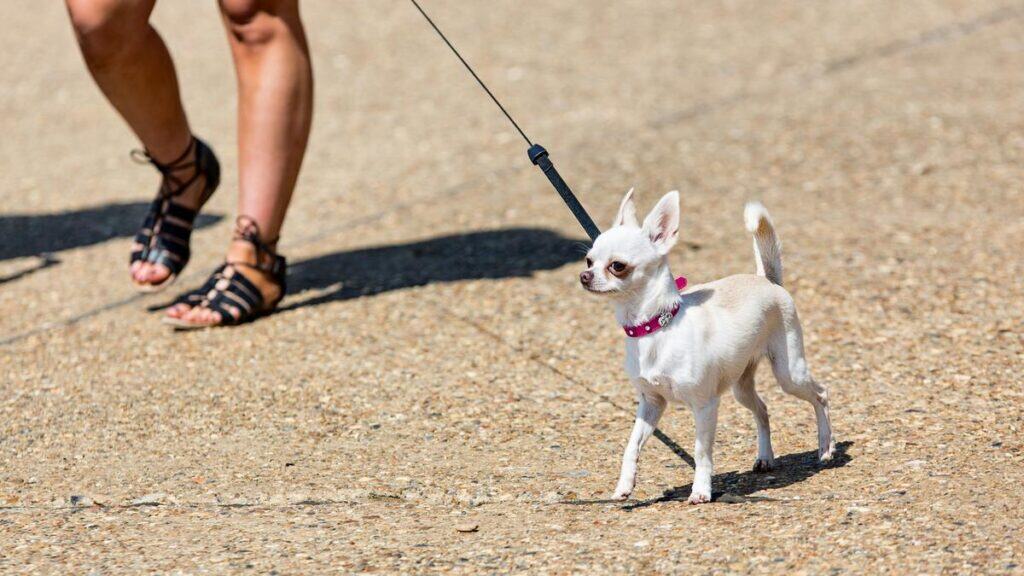Walking your dog can be the highlight of your day. But if that energetic pup turns walks into a tug of war, it quickly becomes less of a pleasure and more of a struggle. Leash training does more than prevent sore arms; it is an essential skill for your dog’s safety and well-being. Whether you are a new dog owner or looking to improve your current routine, learning how to train your dog to walk on a leash can transform every stroll. We will show you an expert, step-by-step approach—helping you enjoy calm, happy walks while answering big questions like how often should you walk your dog and what equipment brings the best results, all with that signature GoWalkies positivity.
Why Leash Training Matters for Every Owner
You are not alone if your dog pulls, zig-zags, or courts every distraction on your walking route. Solid leash training ensures your pup is safe from traffic, can meet other dogs calmly, and gives you peace of mind as you both enjoy the outdoors. The goal is simple: on every walk, you are building trust and strengthening your bond. Plus, being in control makes it easier to explore new places, mingle with other owners, and get the daily exercise that is vital for your dog’s health and happiness. If you want to deepen your technique even further, you might also enjoy our guide on training your dog to walk on a leash.
Choosing the Best Leash and Collar for Your Dog
The right equipment is your best ally on this training journey. In the UK, every dog must wear a flat collar with clearly visible identification. For dogs who are strong pullers, a harness—ideally one with both front and back rings—offers extra control while keeping your pup comfortable. Avoid options that tighten when pulled, like some slip leads, as they can cause discomfort or anxiety. Always ensure your lead is sturdy and the right length for training, usually around 1.2 to 2 meters, giving your dog a bit of freedom but not enough room to dash off to every squirrel. With the right gear, both you and your dog will feel confident starting out together. For more advice on walking gear and UK regulations, check this resource on puppy and dog walking tips.
Step-by-Step Leash Training: Building Good Habits
1. Start Indoors in a Calm Environment
Before hitting the hustling pavements or open fields, start your training somewhere familiar and distraction-free, like your living room or garden. Attach the lead and let your dog get used to the feeling. Every time they pay attention to you or walk without pulling, offer praise and a yummy treat. This early reward system sets your dog up for success and builds trust.
2. Practice the “Stand Still” Method
When your dog starts pulling, simply stop walking. Stand still and wait until your pup glances back at you, then immediately reward with praise or a treat. This teaches them that progress only happens when the lead is loose. Be patient; while it seems simple, this step alone can transform how your dog views walks—it is all about encouraging them to stay close and attentive.
3. Gradually Introduce Moving Together
Once your dog is responding well indoors, head outside to quieter spots. Encourage your dog to walk next to you using a cheerful voice, and when they keep the lead slack, reward often. If the lead tightens, stop again and wait for your dog’s attention to return. Over time, your walks will become more fluid and connected.
4. Practice Short, Regular Sessions
Consistency counts for everything. Plan several short training sessions throughout the week instead of one long, overwhelming walk. This minimises frustration for both of you and helps your dog learn faster. It is the repetition that cements this skill for a lifetime of stress-free strolls together.
5. Add Distractions as You Progress
When your dog walks reliably by your side in calm areas, it is time to add a little challenge. Take routes where you will encounter other walkers, dogs, or sights like cars and cyclists. At first, your dog might get excited by all the action. As before, stop and wait for attention when they pull, then continue and offer rewards as they get it right. This last skill is key to worry-free adventures, from local parks to bustling city pavements.
Troubleshooting Common Walking Challenges
Dealing with Pullers and Excitable Dogs
Does your dog lunge toward every pigeon or greet each lamppost like an old friend? You are not alone. Pulling is one of the most common stumbling blocks, but that stand-still-and-reward approach works wonders. If you feel stuck, consider mixing up treats to keep things interesting or practice focus exercises at home. Avoid yanking or shouting; patience and positive reinforcement always win the day.
Coping with Distractions on Busy Routes
The UK’s bustling streets or countryside trails often throw up a buffet of distractions. When your dog spots another dog or an irresistible scent, calmly increase the distance or prompt a “watch me” command with a treat in hand. Over time, your dog will increasingly look to you for guidance. For more on handling real-world distractions, you can read our comprehensive collection of dog and puppy training tips and advice.
Staying Motivated in the UK’s Wild Weather
Rain, muddy paths, and those long, dark winter afternoons are all part of the UK dog-walking experience. Do not let the weather dampen your spirits or your routine. Invest in a waterproof coat for yourself and, if your dog minds the wet, a comfy canine jacket. Changing up your walking schedule—maybe a lunchtime stroll instead of the evening—can also help you both stay active and cheery, no matter the forecast.
How Often Should You Walk Your Dog?
This is one of the questions we hear most, and for good reason. The simple answer is most dogs thrive with two walks a day, each ranging from 30 minutes up to two hours depending on their breed, size, and age. Some energetic breeds need even more, while older dogs or puppies might be content with shorter outings. Remember, it is all about quality—mental stimulation and socialisation are just as important as physical exercise.
For a deeper look at routines tailored for your dog’s unique needs, our article on how often should I walk my dog breaks down the key factors. By sticking to a consistent schedule, you help your dog burn off energy, improve behaviour, and stay healthy for years to come.
If you are seeking additional advice on health and happiness through walking, explore these helpful dog walking guidelines from the experts.
Making the Most of Every Walk: Community, Adventure, and Joy
Training your dog to walk politely on the lead opens a gateway to all sorts of adventures. Whether you are conquering a local trail, strolling along the seaside, or simply exploring a green park, each walk becomes a shared adventure. Even better, walking your dog is a brilliant way to connect with other owners, share training victories, and be part of a vibrant, friendly community. Local areas and dog-friendly events, like Walk Your Dog Month, offer extra chances to celebrate and get moving—rain or shine.
In the end, learning how to train your dog to walk on a leash is the first step to a happier life for you both. By practicing regularly and discovering what motivates your dog, every outing becomes a moment to connect, get exercise, and spark joy—whether it is a quick wander round the block or a whole weekend ramble. Remember, how often should you walk your dog depends on both your lifestyles, but with consistency, patience, and a bit of British cheer, walking together becomes the highlight of your day, every day.


